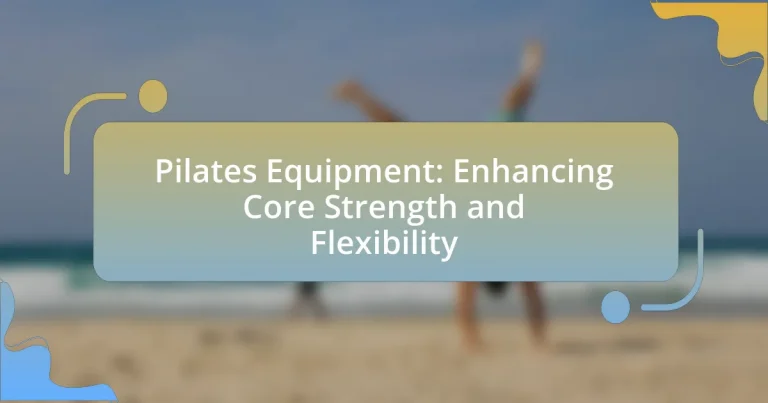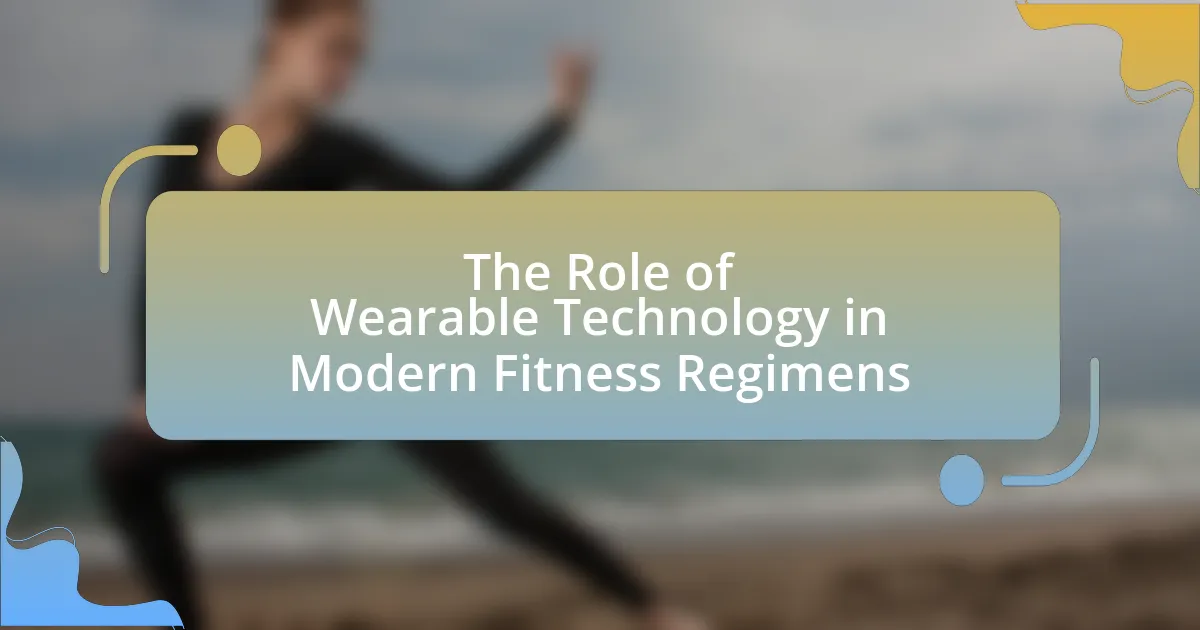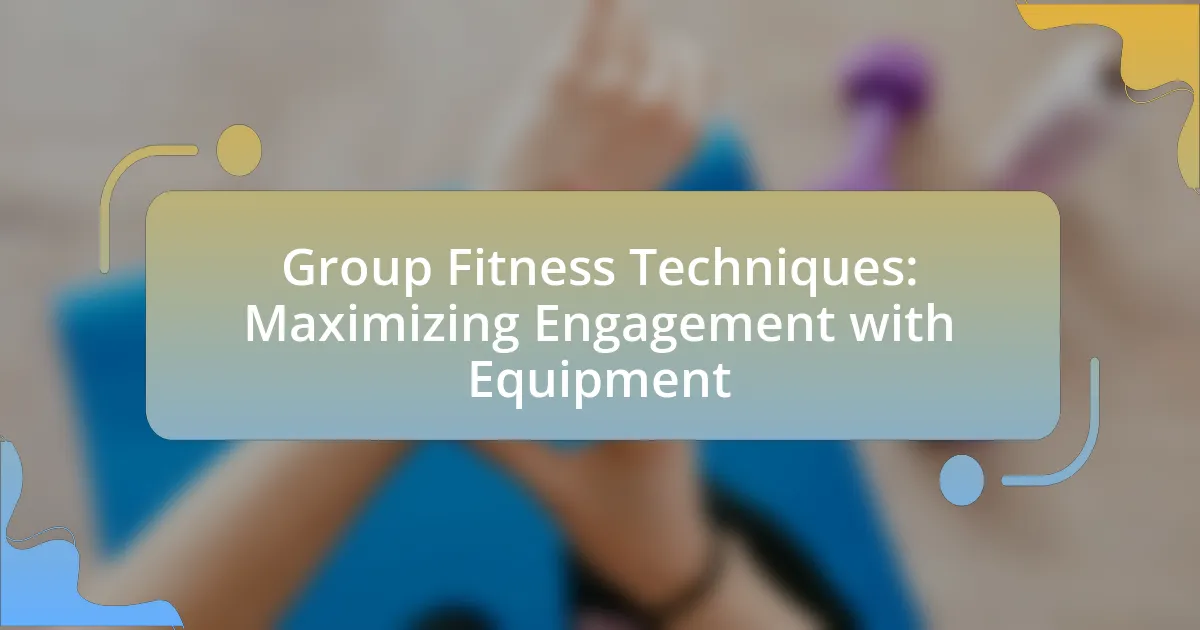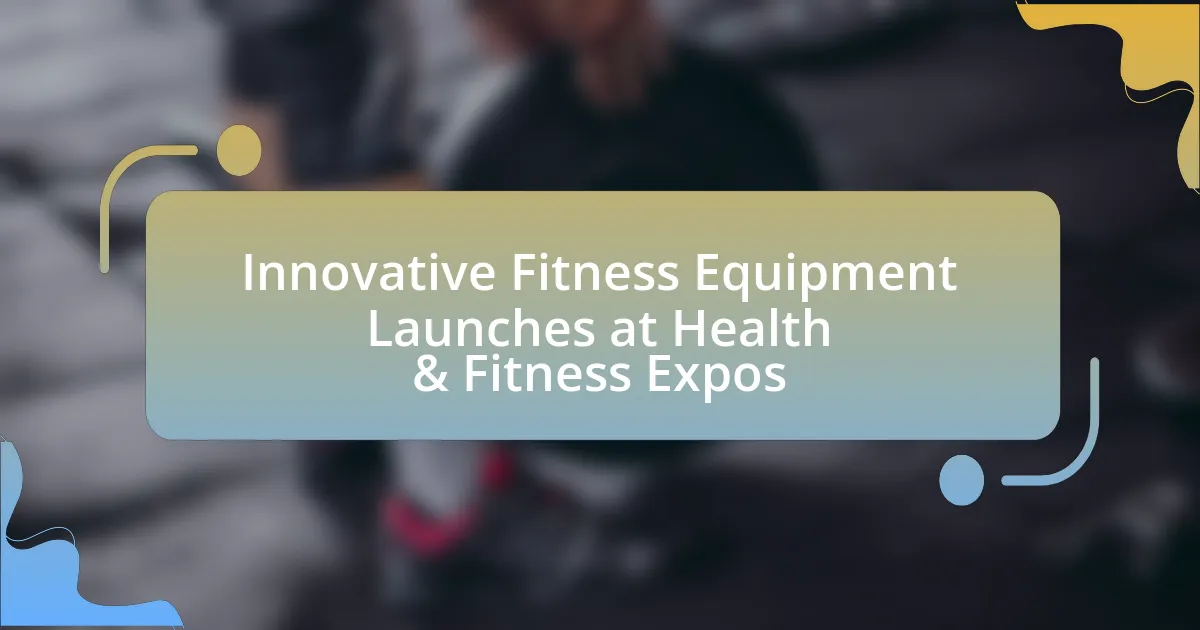Pilates equipment encompasses specialized tools designed to enhance core strength, flexibility, and overall body conditioning. Key types of equipment include the Reformer, Cadillac, and Wunda Chair, each offering unique features that support targeted exercises. The article explores how these tools improve core strength through resistance and support, specific exercises that utilize the equipment, and their role in enhancing flexibility. Additionally, it discusses best practices for using Pilates equipment safely, common mistakes to avoid, and resources for learning effective techniques. Overall, the article provides a comprehensive overview of how Pilates equipment contributes to physical performance and rehabilitation outcomes.
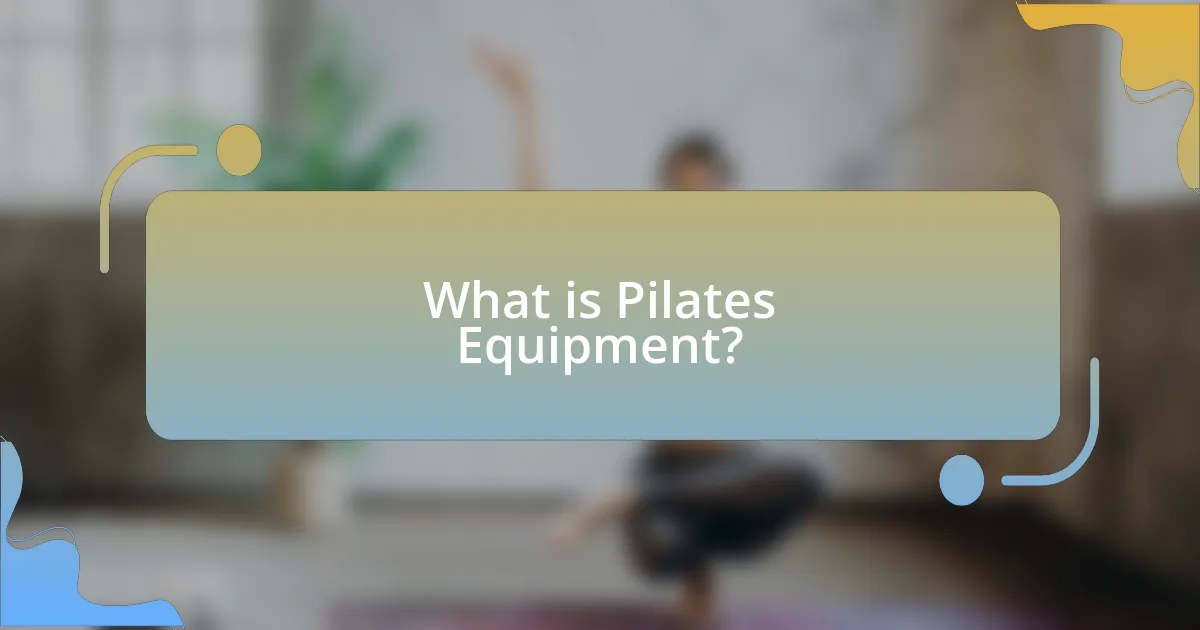
What is Pilates Equipment?
Pilates equipment refers to specialized tools designed to enhance the practice of Pilates, focusing on core strength, flexibility, and overall body conditioning. Common types of Pilates equipment include the Reformer, which uses springs for resistance; the Cadillac, which offers a variety of exercises with adjustable bars and straps; and the Wunda Chair, which provides a compact platform for strength training. These tools are engineered to support various movements and modifications, allowing practitioners to perform exercises with precision and control, thereby improving their physical performance and rehabilitation outcomes.
How does Pilates Equipment enhance core strength?
Pilates equipment enhances core strength by providing resistance and support that facilitate targeted muscle engagement. The Reformer, for example, uses springs to create resistance, allowing users to perform exercises that specifically activate the abdominal muscles, obliques, and lower back. Research indicates that consistent use of Pilates equipment can lead to improved muscle tone and stability in the core region, as evidenced by a study published in the Journal of Bodywork and Movement Therapies, which found that participants experienced significant increases in core strength after an eight-week Pilates program utilizing equipment.
What specific exercises utilize Pilates Equipment for core strength?
Specific exercises that utilize Pilates equipment for core strength include the Pilates Reformer exercises such as the Hundred, Short Box Series, and the Plank. The Hundred involves pumping the arms while engaging the core, promoting stability and endurance. The Short Box Series focuses on various movements that strengthen the abdominal muscles while seated on the box. The Plank exercise on the Reformer enhances core stability by requiring the practitioner to maintain a straight line from head to heels while engaging the core muscles. These exercises are designed to effectively target and strengthen the core, utilizing the resistance and support provided by the Pilates equipment.
How does the design of Pilates Equipment support core engagement?
The design of Pilates equipment supports core engagement by incorporating features that promote stability, resistance, and controlled movement. Equipment such as the Reformer, with its adjustable springs and sliding carriage, allows users to perform exercises that specifically target the abdominal muscles while maintaining proper alignment. The stability provided by the equipment encourages the activation of the core muscles to stabilize the body during various movements. Additionally, the use of props like the Pilates ring and stability balls further enhances core engagement by challenging balance and requiring the activation of deep core muscles to maintain control. Research indicates that exercises performed on Pilates equipment can lead to significant improvements in core strength and stability, as evidenced by studies showing increased muscle activation in the abdominal region during equipment-based workouts compared to mat exercises.
What role does Pilates Equipment play in improving flexibility?
Pilates equipment plays a crucial role in improving flexibility by providing resistance and support that facilitate deeper stretches and controlled movements. The use of equipment such as the reformer, Cadillac, and stability chair allows practitioners to engage in exercises that target specific muscle groups while promoting lengthening and flexibility. Research indicates that consistent use of Pilates equipment can lead to significant improvements in flexibility, as evidenced by a study published in the Journal of Bodywork and Movement Therapies, which found that participants experienced enhanced range of motion after a structured Pilates program utilizing equipment.
Which types of Pilates Equipment are best for flexibility training?
The best types of Pilates equipment for flexibility training are the Reformer, Cadillac, and Pilates Chair. The Reformer utilizes springs and pulleys to provide resistance and support, allowing for a wide range of movements that enhance flexibility. The Cadillac, with its trapeze and various attachments, offers unique stretching opportunities and promotes greater range of motion. The Pilates Chair, through its compact design and adjustable resistance, facilitates targeted stretching and strengthening exercises that improve flexibility. These pieces of equipment are specifically designed to engage multiple muscle groups while promoting elongation and flexibility in the body.
How do Pilates exercises with equipment promote flexibility?
Pilates exercises with equipment promote flexibility by utilizing resistance and support to enhance muscle elongation and joint mobility. The equipment, such as reformers and resistance bands, allows for controlled movements that target specific muscle groups, facilitating deeper stretches and improved range of motion. Research indicates that consistent practice of Pilates can lead to significant increases in flexibility, as evidenced by a study published in the Journal of Bodywork and Movement Therapies, which found that participants experienced a 30% improvement in flexibility after an eight-week Pilates program. This effectiveness is attributed to the combination of strength training and stretching inherent in Pilates, which encourages the body to adapt and become more flexible over time.
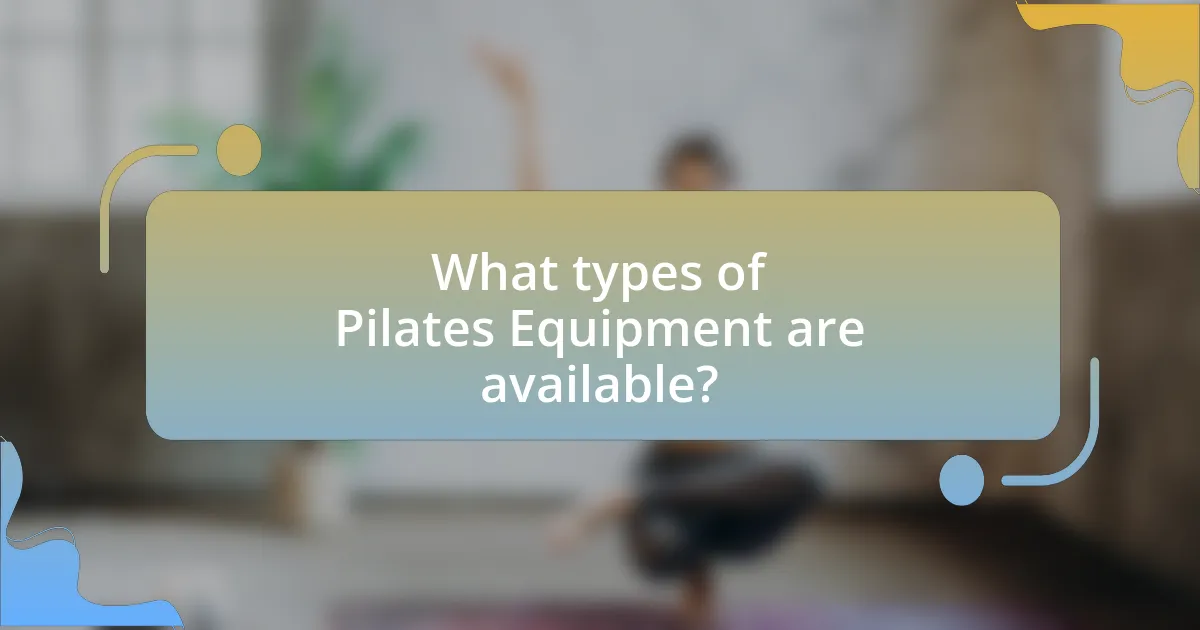
What types of Pilates Equipment are available?
Various types of Pilates equipment are available, including the Reformer, Cadillac, Wunda Chair, and Pilates barrels. The Reformer is a versatile machine that uses springs for resistance, allowing for a wide range of exercises targeting different muscle groups. The Cadillac, also known as the Trapeze Table, features a frame with various attachments for advanced movements and support. The Wunda Chair is a compact piece of equipment designed for strength training and balance exercises. Pilates barrels, including the Spine Corrector and Ladder Barrel, are used to enhance flexibility and spinal alignment. Each type of equipment serves specific purposes in enhancing core strength and flexibility, making them integral to Pilates practice.
What are the main categories of Pilates Equipment?
The main categories of Pilates equipment are reformers, stability chairs, barrels, and props. Reformers are versatile machines that use springs for resistance, allowing for a wide range of exercises targeting various muscle groups. Stability chairs, also known as wunda chairs, provide a compact option for strength training and balance work. Barrels, including the spine corrector and ladder barrel, are designed to enhance flexibility and spinal alignment. Props, such as resistance bands, balls, and foam rollers, are used to support and modify exercises, making them accessible for different fitness levels. Each category serves a specific purpose in enhancing core strength and flexibility, integral to the Pilates method.
How do reformers differ from other Pilates Equipment?
Reformers differ from other Pilates equipment primarily in their design and functionality, as they utilize a sliding carriage and adjustable springs to provide resistance and support during exercises. This unique mechanism allows for a greater range of motion and versatility in workouts compared to other equipment like mats or stability balls, which rely solely on body weight for resistance. The reformer’s ability to adjust resistance levels enables users to tailor their workouts to their specific strength and flexibility needs, making it a preferred choice for both rehabilitation and advanced training.
What are the benefits of using props like blocks and straps?
Using props like blocks and straps in Pilates enhances core strength and flexibility by providing support and facilitating proper alignment. Blocks help individuals achieve deeper stretches and maintain stability in various poses, while straps assist in extending reach and improving muscle engagement. Research indicates that the use of props can lead to increased range of motion and reduced risk of injury, as they allow practitioners to modify exercises according to their individual needs and abilities. This adaptability is crucial for both beginners and advanced practitioners, ensuring effective workouts that promote safety and effectiveness in achieving fitness goals.
How do different Pilates Equipment pieces target various muscle groups?
Different Pilates equipment pieces target various muscle groups through their unique mechanisms and resistance levels. For instance, the Reformer primarily engages the core, legs, and arms by utilizing adjustable springs that provide resistance during exercises like leg presses and arm pulls. The Cadillac, with its trapeze and various attachments, allows for a wider range of movements, effectively targeting the back, shoulders, and hips through exercises such as pull-ups and leg springs. The Stability Ball enhances balance and core stability, focusing on the abdominal muscles during exercises like ball passes and wall squats. Each piece of equipment is designed to isolate and strengthen specific muscle groups, promoting overall body alignment and flexibility.
Which equipment is most effective for beginners?
The most effective equipment for beginners in Pilates is the reformer. The reformer provides adjustable resistance, allowing beginners to perform exercises with varying levels of difficulty while maintaining proper form. This versatility helps in building core strength and flexibility, which are essential components of Pilates practice. Studies indicate that using a reformer can enhance muscle activation and improve overall body awareness, making it an ideal choice for those new to Pilates.
How can advanced practitioners benefit from specialized equipment?
Advanced practitioners can benefit from specialized equipment by enhancing their training efficiency and effectiveness. This equipment, such as reformers and stability balls, allows for more precise movements and targeted muscle engagement, which is crucial for advanced techniques. Research indicates that using specialized Pilates equipment can lead to improved core strength and flexibility, as it provides resistance and support that facilitate deeper muscle activation and control. For instance, a study published in the Journal of Bodywork and Movement Therapies found that participants using reformers demonstrated a significant increase in core stability compared to those using traditional methods.
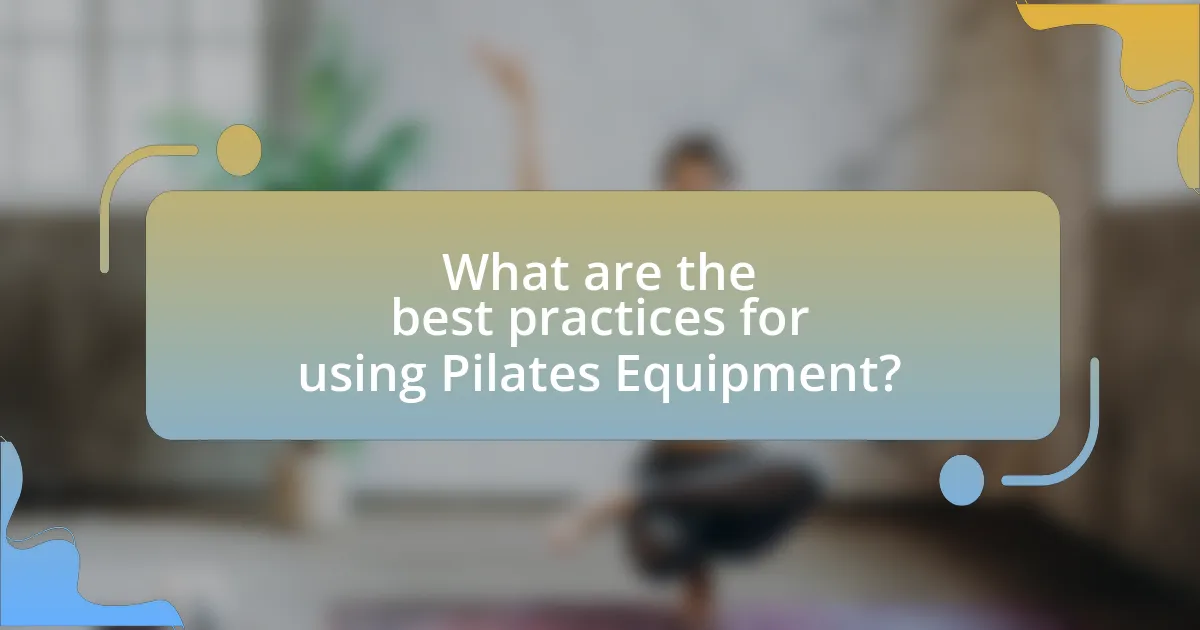
What are the best practices for using Pilates Equipment?
The best practices for using Pilates equipment include proper alignment, controlled movements, and consistent breathing. Proper alignment ensures that the body is positioned correctly to prevent injury and maximize effectiveness; for example, maintaining a neutral spine during exercises enhances core engagement. Controlled movements are essential as they promote muscle activation and prevent strain; performing exercises slowly allows for better focus on form and technique. Consistent breathing, particularly inhaling through the nose and exhaling through the mouth, supports muscle function and relaxation, which is crucial for effective practice. Following these practices can lead to improved core strength and flexibility, as supported by studies indicating that structured Pilates routines enhance physical performance and reduce injury risk.
How can one safely use Pilates Equipment to avoid injury?
To safely use Pilates equipment and avoid injury, one should ensure proper alignment and technique during exercises. Maintaining correct posture is crucial, as improper alignment can lead to strain or injury. Additionally, beginners should start with basic exercises and gradually progress to more advanced movements, allowing the body to adapt. Using equipment that is well-maintained and appropriate for one’s skill level further reduces the risk of injury. Research indicates that proper instruction and awareness of body mechanics significantly decrease the likelihood of injuries in Pilates practice.
What common mistakes should be avoided when using Pilates Equipment?
Common mistakes to avoid when using Pilates equipment include improper alignment, inadequate control, and neglecting breath. Improper alignment can lead to strain and injury; for instance, not maintaining a neutral spine while using the reformer can compromise effectiveness and safety. Inadequate control during movements may result in ineffective workouts; for example, rushing through exercises can prevent proper muscle engagement. Neglecting breath can hinder performance, as breath is essential for facilitating movement and maintaining focus. These mistakes can diminish the benefits of Pilates, which aims to enhance core strength and flexibility.
How can proper alignment be maintained during exercises?
Proper alignment during exercises can be maintained by focusing on body awareness and utilizing appropriate equipment. Engaging the core muscles stabilizes the spine and pelvis, ensuring that the body remains in a neutral position throughout the movement. Additionally, using Pilates equipment, such as reformers and stability balls, provides support and feedback, helping individuals to achieve and maintain correct alignment. Research indicates that consistent practice of alignment-focused exercises can improve overall posture and reduce the risk of injury, as evidenced by a study published in the Journal of Bodywork and Movement Therapies, which found that participants who practiced Pilates showed significant improvements in postural alignment and core stability.
What tips can enhance the effectiveness of Pilates workouts?
To enhance the effectiveness of Pilates workouts, focus on maintaining proper form and alignment throughout each exercise. Proper alignment ensures that the core muscles are engaged effectively, which is crucial for maximizing strength and flexibility benefits. Research indicates that maintaining correct posture during Pilates can lead to improved muscle activation and reduced risk of injury. Additionally, incorporating a variety of equipment, such as resistance bands and reformers, can provide added resistance and support, further enhancing workout intensity and effectiveness.
How can one create a balanced Pilates routine with equipment?
To create a balanced Pilates routine with equipment, one should incorporate a variety of exercises that target different muscle groups while ensuring equal focus on strength, flexibility, and stability. A well-rounded routine typically includes exercises using a reformer, stability ball, and resistance bands, allowing for a comprehensive approach to core engagement and muscle development. For instance, combining exercises like the Footwork on the reformer for lower body strength, the Roll-Up for spinal flexibility, and the Plank with resistance bands for core stability ensures that all major areas are addressed. This method aligns with the principles of Pilates, which emphasize balanced muscle development and functional movement patterns.
What are some recommended resources for learning Pilates techniques?
Some recommended resources for learning Pilates techniques include the book “The Pilates Body” by Brooke Siler, which provides comprehensive guidance on exercises and principles. Additionally, online platforms like Pilates Anytime offer a variety of instructional videos led by certified instructors, making it accessible for learners at all levels. The American Council on Exercise (ACE) also provides educational materials and certifications for those interested in a more formal approach to Pilates training. These resources are widely recognized in the fitness community for their quality and effectiveness in teaching Pilates techniques.
